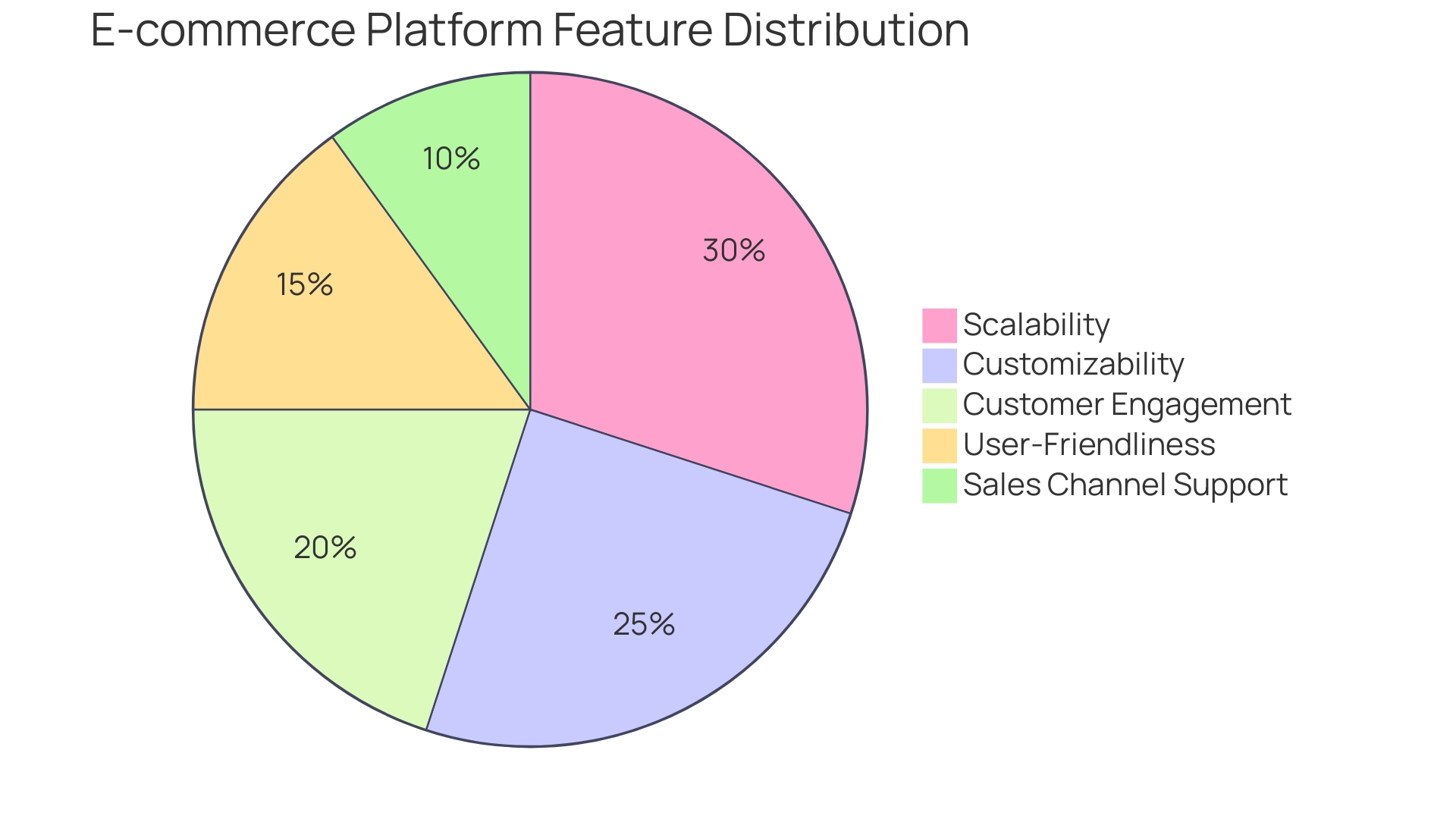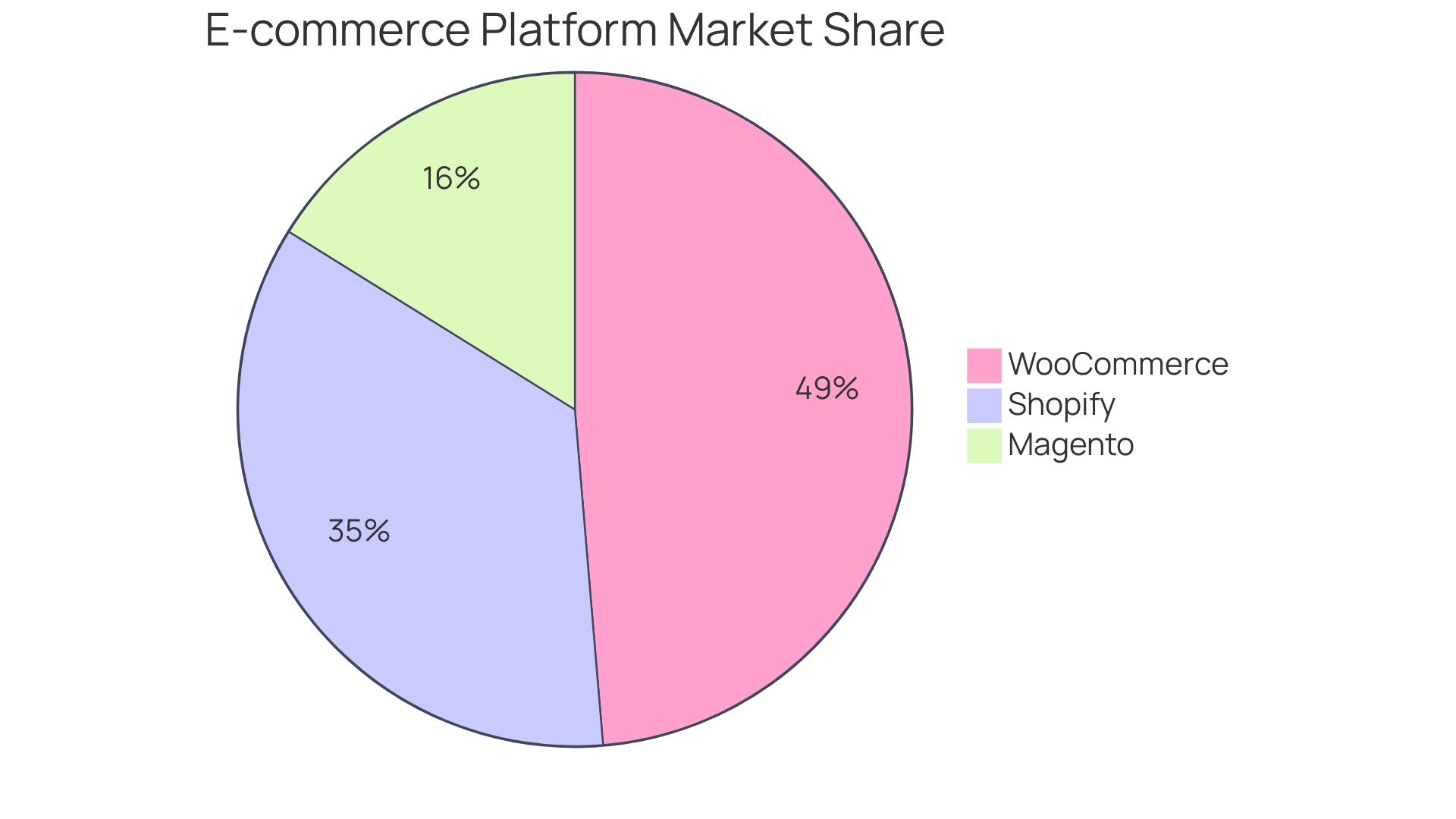Introduction
When venturing into online retail, selecting the right e-commerce platform is crucial. Magento and WooCommerce are two dominant forces in the industry, each with its own unique offerings. Magento is known for its extensive features and scalability, making it ideal for retailers aiming for growth and expansion.
On the other hand, WooCommerce is an open-source platform that seamlessly integrates with WordPress, offering flexibility and a user-friendly experience. However, it's important to consider factors such as hosting costs, domain names, and premium plugins that may accumulate. In this article, we will explore the key features, ease of use, customization options, scalability, performance, security, support, and pricing of Magento and WooCommerce to help you make an informed decision for your online business.
Overview of Magento and WooCommerce
When venturing into online retail, selecting a robust e-commerce platform is pivotal. Magento and WooCommerce emerge as two dominant forces, each with distinct offerings.
Magento, known for its extensive features and scalability, caters to retailers aiming for growth and expansion. WooCommerce, an open-source platform, integrates seamlessly with WordPress, offering flexibility and a user-friendly experience, although it demands consideration for hosting costs, domain names, and premium plugins that may accumulate.
The choice of platform can have profound implications on performance. An illustrative case is of an online retailer who initially chose a local hosting provider, leading to a website that took over six seconds to load and crashed during high-traffic campaigns, provoking customer complaints and operational disruptions.
This highlights the critical nature of reliable hosting, an area where the U.S. web hosting industry's CAGR of 15.5% reflects the increasing reliance on quality web services, with giants like GoDaddy holding a significant market share. Amidst the festive shopping frenzy, platforms like Amazon and Flipkart showcase the potential of e-commerce, driving sales through events like the Great Indian Festival and Big Billion Days. These platforms demonstrate the lucrative opportunities available for retailers who can navigate the complex landscape of online sales channels. Ultimately, the decision between platforms like Magento and WooCommerce should be made with careful consideration of the business's specific needs, taking into account factors such as cost, scalability, customizability, and ease of use. The modern e-commerce environment demands a balance between user-friendliness and the ability to customize and scale, as each platform comes with its own set of advantages and limitations.
Key Features Comparison
Selecting the right e-commerce platform is a pivotal decision for online retail success, and it's essential to choose one that aligns with your business's scale and customizability needs. Magento's robustness and scalability are its hallmarks, proven by HubSpot's venture of upgrading their thousand MySQL clusters with Vitess, enhancing automation and reducing future upgrade times from a year to a quarter. This demonstrates Magento's capacity to adapt and grow with large-scale operations.
In contrast, WooCommerce, recently rebranded to woo.com, emphasizes a user-friendly experience and customization. Its community-driven approach ensures that you have the flexibility to tailor your store to your vision, evidenced by the brand's seamless transition to WooPayments. However, it's important to consider the overall e-commerce landscape.
Global e-commerce sales have soared to $5 trillion and are projected to reach over $7 trillion by 2025, as reported by IDC. Thus, investing in a platform that caters to scalability and customer engagement across diverse sales channels is crucial. Whether you're part of the burgeoning DIY and Hardware Store market or the expanding Luxury Goods sector, your platform choice should support your growth trajectory and help you capture a share of the thriving e-commerce pie.

Ease of Use and Customization
Deciding on the right e-commerce platform is pivotal for your online store's success, with options like WooCommerce, Shopify, and Magento each offering distinctive advantages. WooCommerce, built upon the user-friendly WordPress, is free to install.
Costs arise from hosting, domain names, and any premium plugins or themes, with hosting prices varying by provider. In contrast, Shopify's pricing plans encompass hosting, security, and updates, appealing to those seeking a comprehensive package.
Shopify also caters to beginners, offering an intuitive interface, built-in features, and a selection of themes for a seamless setup experience, without requiring technical expertise or design skills. Magento, on the other hand, is renowned for its extensive customization capabilities, enabling the creation of unique online storefronts.
The platform's flexibility is ideal for businesses aiming to scale and tailor their customer experience precisely. However, this comes with a learning curve and may necessitate a higher investment in setup and maintenance. Businesses must weigh their size, budget, and technical capacity when choosing a platform to ensure it aligns with their long-term goals. Recent trends show the e-commerce landscape is rapidly evolving, with newcomers like Temu and Shein experiencing swift user growth, while established giants like Amazon have seen a dip in daily app users. This underscores the importance of selecting a platform that not only meets current needs but is also adaptable to future market shifts and consumer behaviors.
Scalability and Performance
When it comes to handling large catalogs and high website traffic, Magento emerges as a robust platform designed for scalability. Its architecture allows it to efficiently manage significant volumes of data, much like the strategy PayPal adopted during its rapid growth phase. They faced challenges in scaling to over a million transactions a day, which involved network infrastructure expansion and increasing maintenance costs due to the complexity of running services across a multitude of virtual machines.
WooCommerce, while an excellent platform for small to medium-sized businesses, might encounter performance bottlenecks under similar heavy loads. To maintain website performance, utilizing Content Delivery Networks (CDNs) is a strategic move as they store and deliver static content from servers close to the user, reducing latency. Magento's performance is also contingent on regular updates and patches that address issues and enhance functionality.
Database optimization, including cleaning up log files and re indexing, is crucial for Magento to ensure swift and precise search results for the end users. Pricing models differ across platforms, with WooCommerce being free to install but incurring costs for hosting and add-ons. Shopify provides tiered pricing plans, including hosting and security.
However, additional costs for themes, apps, and transaction fees can accumulate. Shopify is capable of managing high traffic and order volumes, but it comes with its set of limitations, such as customizability and the difficulty of migrating out of the Shopify ecosystem. In summary, when selecting an eCommerce platform, one must weigh the scalability needs against the costs and potential complexities involved in maintaining and optimizing the infrastructure, all while keeping in mind the importance of delivering a seamless shopping experience to customers.
Security and Support
When considering the integration capabilities of e-commerce platforms like Magento and WooCommerce, one must weigh their approaches to security and customer support. Magento, renowned for its advanced security solutions, recently faced a critical vulnerability that highlighted the importance of timely updates and professional support services.
This incident underscores the necessity for e-commerce platforms to provide robust security measures and proactive customer support to protect customer data and maintain trust. WooCommerce, on the other hand, has embraced its community-driven branding with the transition to woo.com, emphasizing its commitment to user support through its team of Happiness Engineers.
The platform's rebranding to Woo reflects its user-friendly ethos and focus on providing streamlined services, such as WooPayments. In the competitive e-commerce space, platforms must offer not only comprehensive security features but also exceptional customer service to enhance the shopping experience.
As the holiday season approaches, the importance of customer service becomes even more pronounced, with 46% of customers seeking a personalized experience. This demand for personalization and quality support is echoed by statistics indicating that 5 out of 10 customers prefer phone interactions for resolving issues, with online chat as the second preferred method. Ultimately, choosing the right e-commerce platform involves balancing ease of use, security, and the level of support available. Whether it's Magento's professional support services addressing SEO challenges and mobile responsiveness or WooCommerce's community-centric approach, both platforms strive to cater to the evolving needs of online businesses and their customers.
Pricing and Cost
Selecting the right e-commerce platform is a critical decision for any business venturing into the online marketplace. WooCommerce, a popular choice, offers a free plugin that can be enhanced with premium extensions, though it requires separate costs for hosting and domain registration. On the other hand, Magento presents a dual approach with its free community edition for those seeking a basic start, and a paid enterprise edition that boasts advanced features and dedicated support, catering to businesses with a larger scope and need for customization.
When considering the costs associated with each platform, it's important to note that web hosting can significantly vary. Shared web hosting, which holds a 42.5% global market share, is the most common, yet prices can range dramatically based on the provider. GoDaddy, leading the market with a 16.5% share, exemplifies the competitive nature of hosting services.
Furthermore, with over 500,000 new domains registered monthly, and an average cost of $10-$20 per year for a domain name, these recurring fees can add up over time. Shopify simplifies the decision-making process by offering tiered pricing plans, from basic to advanced, which encompass hosting, security, and updates. Although initially more expensive than WooCommerce, Shopify's all-in-one package eliminates the hassle of dealing with multiple vendors and services.
However, it's important to weigh the long-term costs and scalability, as Shopify's plans come with limitations on staff accounts and customization options, which may hinder a business's growth and ability to pivot. Ultimately, the ideal platform should be user-friendly, scalable, and capable of integrating with other tools and services. Each platform offers distinct pathways and potential for a business's online journey, making it essential to thoroughly assess your business needs against what each e-commerce solution can offer.

Conclusion
In conclusion, when selecting an e-commerce platform, consider scalability, customization options, ease of use, performance, security, support, and pricing. Magento offers extensive features and scalability for growth-oriented retailers but requires a higher investment. WooCommerce provides flexibility and a user-friendly experience with additional costs for hosting and plugins.
For ease of use and customization, WooCommerce is free to install and appeals to beginners. Magento offers extensive customization capabilities but has a learning curve. Magento is robust for handling large catalogs and high website traffic while WooCommerce may face performance bottlenecks under heavy loads.
Magento provides advanced security solutions but had a recent vulnerability. WooCommerce emphasizes user support through its Happiness Engineers. Pricing models differ with WooCommerce being free to install but requiring separate costs for hosting.
Magento offers a free community edition and a paid enterprise edition. Choose an e-commerce platform that aligns with your needs while considering factors like cost-effectiveness, scalability potential, ease of use/customizability balance, performance under heavy loads, security measures/support availability. Make an informed decision in the ever-evolving e-commerce landscape.





